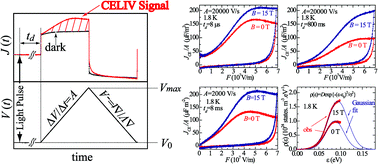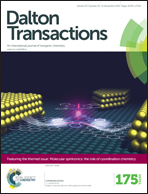Magnetic field effects of photocarrier generation in bulk heterojunctions at low temperature
Abstract
We report an experimental investigation of the magnetic field effect (MFE) in polymer bulk heterojunction devices at temperatures below 10 K using photocarrier extraction by linearly increasing voltages. The examined devices were composed of an active layer of poly(3-hexylthiophene) and [6,6]-phenyl-C61-butyric acid methyl ester. In the experiments, the delay time (td) dependence of the MFE was investigated in detail. For td < 80 μs, a positive MFE was observed in the field region B < 0.1 T and a negative MFE was observed for B > 0.2 T. For td > 8 ms, only a positive MFE proportional to B2 was observed. For the photocurrent pulse detected immediately after light irradiation, the MFE was negligibly small. In a high magnetic field of 15 T, a significant MFE exceeding 80% was observed at 1.8 K for td = 800 ms. We discuss the results based on a model of triplet–singlet (or singlet–triplet) conversion in the magnetic field and estimate the exchange integral for the charge-transfer exciton in this photovoltaic cell.

- This article is part of the themed collection: Molecular Spintronics : The role of Coordination Chemistry

 Please wait while we load your content...
Please wait while we load your content...